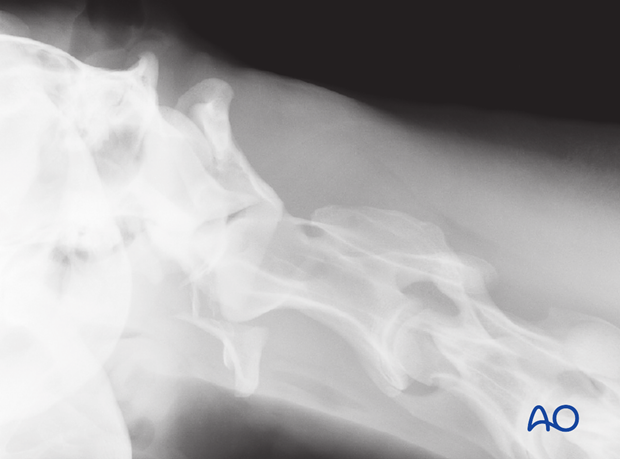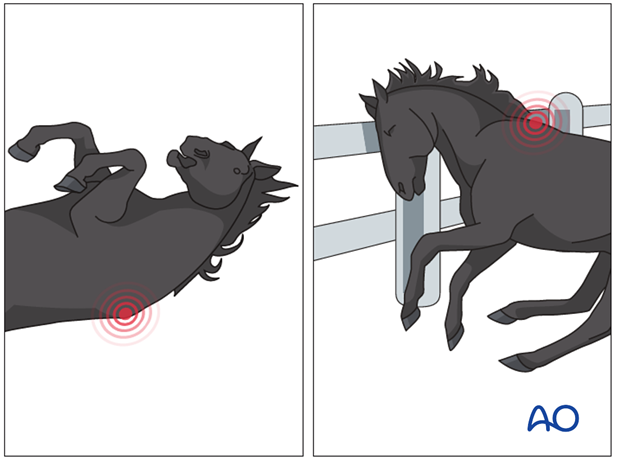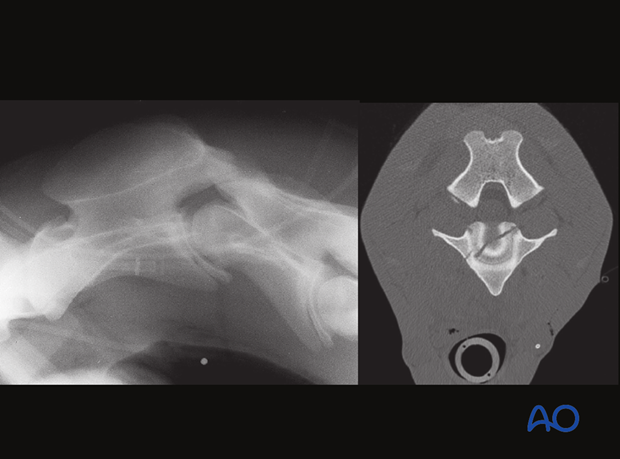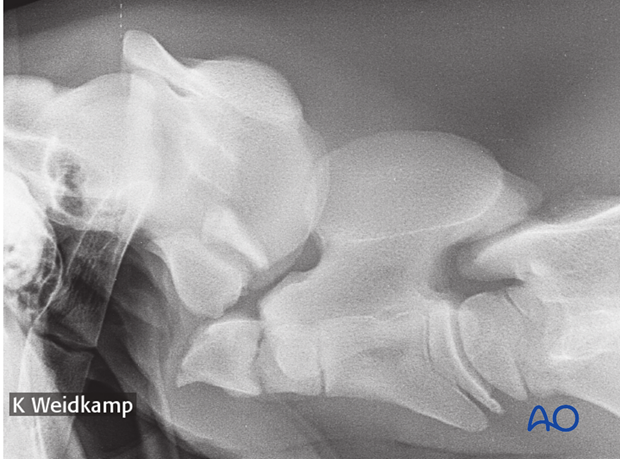C1 (Atlas) fractures
Fracture of the atlas vertebra.

Cervical fractures
Vertebral fractures may be present with or without neurologic signs. Symptoms and prognosis of vertebral fractures depend on their location, the portion of the vertebra that sustains the trauma and the degree of compression of the spinal cord. Foals are more susceptible to vertebral fractures than adults.
The cervical vertebrae are more likely to be affected. Vertebral fractures in the adult horse are rare; approximately 50% involve the cervical vertebrae.
Cervical stenotic myelopathy is a common cause in ataxia in young horses.
Etiology
- Rearing and falling over backward (falls over jumps and obstacles)
- Collisions and kicks (head on collisions)

Prognosis
The prognosis correlates with the severity of the spinal cord damage, the severity of the fracture, and the duration of the problem until treatment.
Clinical signs of cervical vertebral fractures
Clinical signs of cervical vertebral fractures depend on:
- Degree of bony disruption
- Instability at the fracture site
- Severity of the trauma to the spinal cord
Clinical signs can be:
- Mild ataxia to quadriplegia and sudden death
- Lameness of the forelimbs
- Neck pain, stiffness and torticollis
- Sympathetic dysfunction: Horner syndrome, skin hyperthermia
Imaging
Radiographs:
- The growth plates and their closure times must be taken into consideration when interpreting the radiographic images in foals and young adults horses.
- Frequently fissures lines and fractures are overlooked. Other imaging modalities are advised.
- Fracture lines are often poorly visualized.

Radiographic examination:
- Lateral radiographs
- Ventrodorsal radiographs. In the thoracolumbar region they are usually unrewarding because of the massive musculature around the vertebrae.

Computertomography:
- Possible up to C7 with standard CT scanner in adult horses.
Myelography:
- Very useful for the neck area
- Definitive diagnosis for cervical stenotic myelopathy is achieved by myelography, which helps to differentiate between dynamic and static compression.
MRI:
- Only possible for the first vertebrae with standard MRI in adult horses. A complete examination is possible in foals, small horses, ponies, and donkeys.













